Step back in time with us as we embark on a captivating journey through Ancient Egypt Trivia Questions.
Ancient Egypt, a beacon of civilization, bestowed upon the world wonders that continue to mystify and inspire.
From the majestic pyramids that pierce the sky to the enigmatic rulers who shaped an era, the legacy of Ancient Egypt endures, beckoning us to unravel its secrets.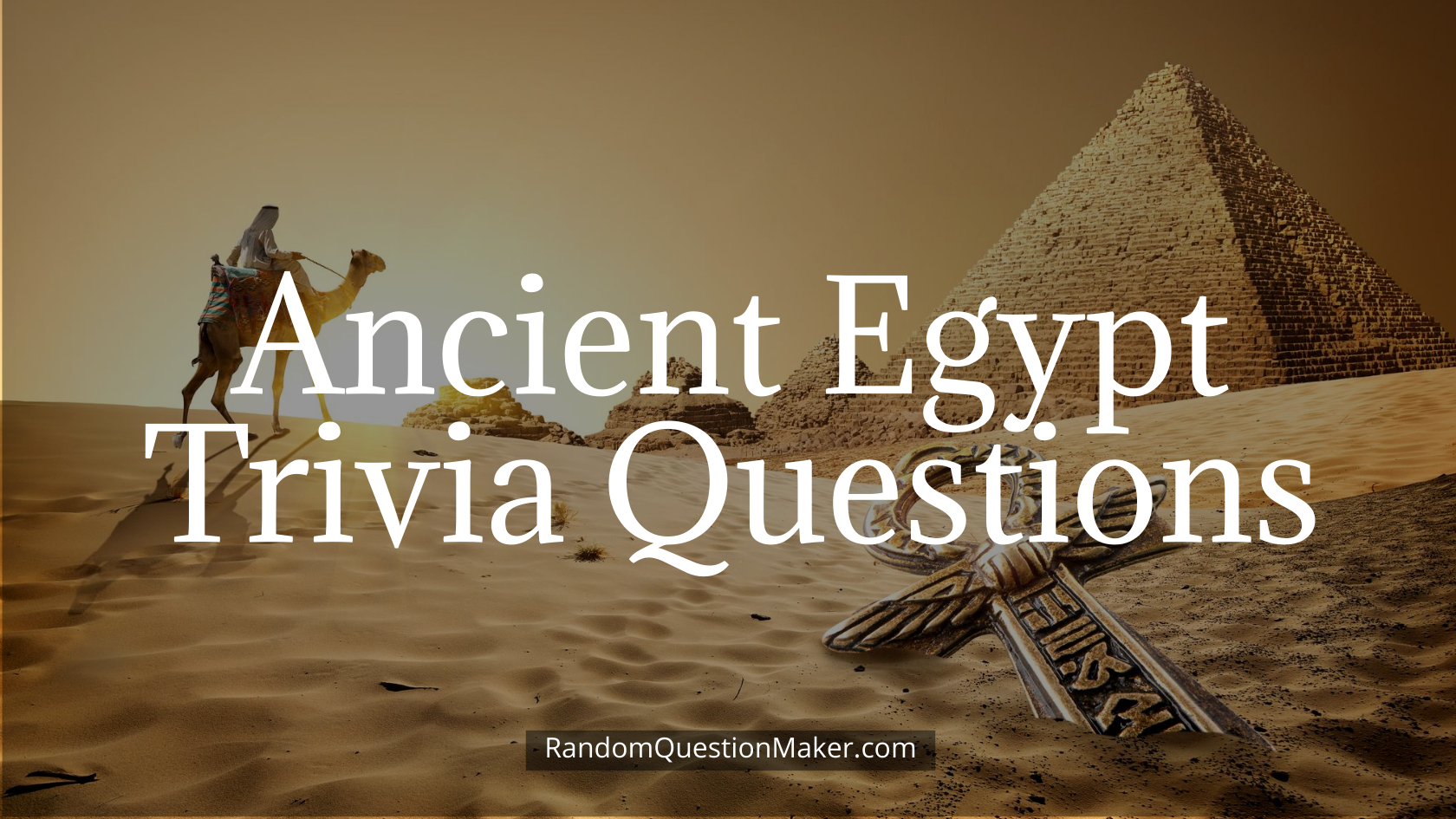
Are you ready to test your knowledge and discover the marvels of this historical tapestry?
Our Ancient Egypt trivia questions promise not only a delightful challenge but also a voyage into the heart of a civilization that has left an indelible mark on humanity.
Join us as we delve into the past and explore the captivating realm of Ancient Egypt.
Let the quest for knowledge begin!
General Ancient Egypt Trivia Questions
1. What precious stone did the ancient Egyptians use to make jewelry and amulets, believing it had protective powers?
Lapis Lazuli
The vibrant blue Lapis Lazuli was highly valued in ancient Egypt, believed to bring protection and good fortune. It was often used to craft jewelry, amulets, and the iconic blue pigment for cosmetics.
2. Who was the female pharaoh known for her prosperous reign and the construction of numerous temples, including the renowned Dendera Temple complex?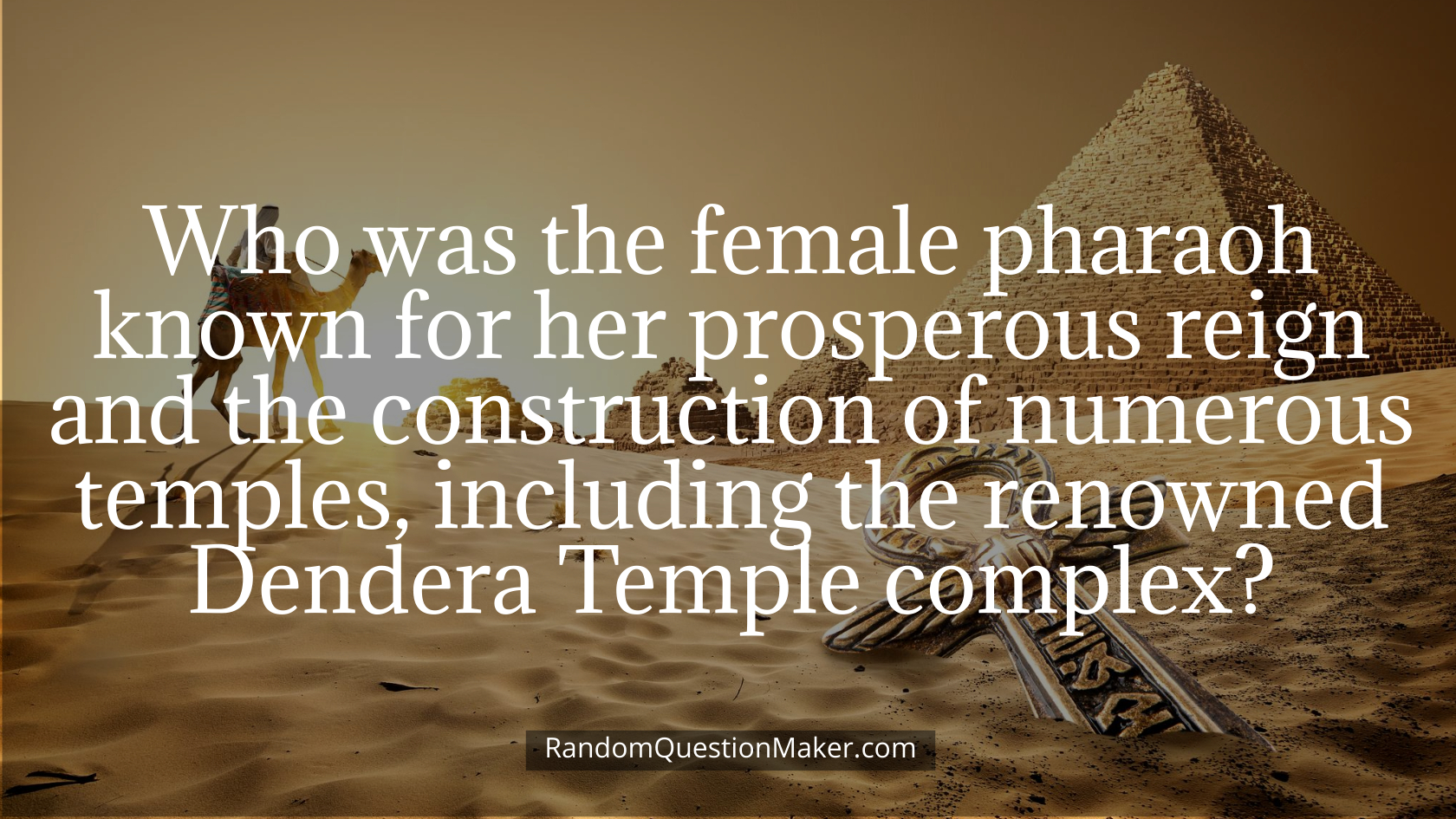 f
f
Hatshepsut
Hatshepsut, one of the few female pharaohs, ruled during the 18th dynasty and left a legacy of impressive architectural feats, contributing to the cultural richness of Ancient Egypt.
3. What river, often considered the lifeblood of Ancient Egypt, flows through the heart of the civilization and played a crucial role in its agricultural prosperity?
Nile
The Nile River, with its annual flooding, brought fertile silt to the Egyptian lands, ensuring bountiful harvests and sustaining the flourishing civilization along its banks.
4. Which ancient Egyptian goddess is typically depicted as a lioness and is associated with protection, motherhood, and the pharaoh’s power?
Sekhmet
Sekhmet, a powerful and fierce goddess, was revered for her protective qualities. She was believed to ward off evil and safeguard the pharaoh, embodying both ferocity and maternal care.
5. What ancient Egyptian city, often referred to as the “City of the Dead,” served as a vast burial ground with elaborate tombs and monuments for the deceased?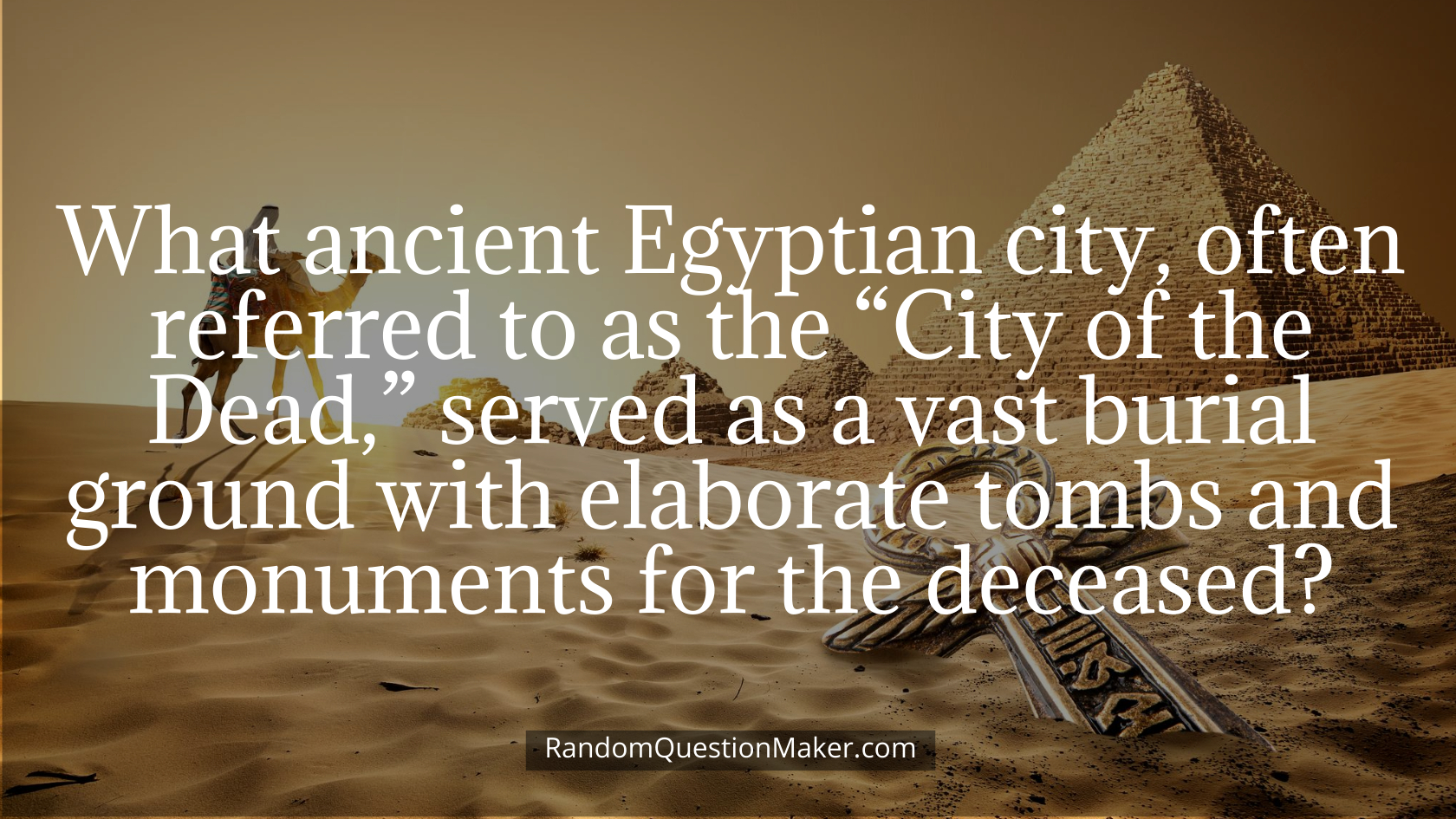
Memphis
Memphis, the ancient capital of Egypt, housed extensive necropolises, such as Saqqara, where elaborate burial complexes and pyramids were constructed for pharaohs and nobles.
6. In ancient Egyptian religion, who was the god of the afterlife and the judge of souls, weighing the hearts of the deceased against the feather of Ma’at?
Anubis
Anubis, with the head of a jackal, played a crucial role in the journey to the afterlife, overseeing the weighing of hearts to determine the fate of souls in the Egyptian underworld.
7. What writing material, made from the papyrus plant, was widely used in ancient Egypt for documents, scrolls, and various forms of written communication?
Papyrus
The ancient Egyptians crafted a versatile writing material from the papyrus plant, creating scrolls and documents that preserved their knowledge, literature, and administrative records.
8. Which famous queen of Ancient Egypt, known for her alliances and conflicts with Rome, was the lover of Julius Caesar and later married Mark Antony?
Cleopatra
Cleopatra, a captivating figure in history, played a significant role in the politics of the Roman Republic and had relationships with key Roman leaders, leaving an enduring mark on the era.
9. What bird, associated with the sun god Ra, was considered sacred in ancient Egypt and often depicted with a solar disk on its head?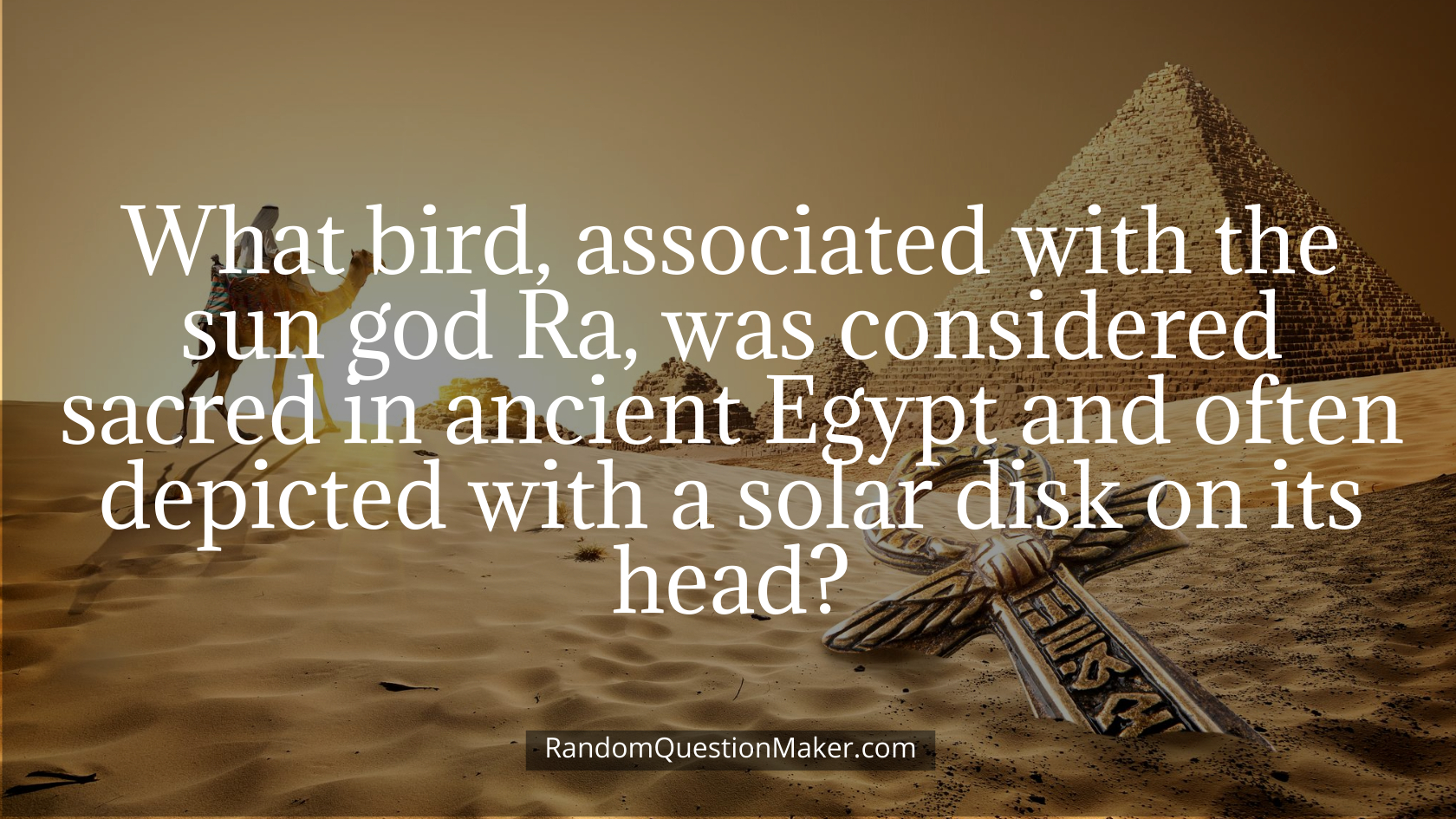
Falcon
The falcon, symbolizing the divine, was sacred to Ra and associated with the sun’s journey across the sky. It held a prominent place in Egyptian iconography and religious symbolism.
10. What ancient Egyptian festival, dedicated to the goddess Isis, involved joyous celebrations, music, and dance, commemorating the resurrection of Osiris?
Opet Festival
The Opet Festival, a grand celebration in honor of Isis and Osiris, marked a period of festivity, rituals, and processions, symbolizing renewal and the cycle of life in ancient Egyptian belief.
Pharaoh Trivia
11. Which pharaoh initiated the construction of the Karnak Temple complex, one of the largest religious structures in ancient Egypt?
Pharaoh Thutmose III
Thutmose III, often called the “Napoleon of Egypt,” expanded and enhanced the Karnak Temple complex, leaving a monumental legacy in the religious architecture of ancient Egypt during his reign from 1479-1425 BC.
12. Who was the pharaoh associated with the famous discovery of the Rosetta Stone, a crucial key to deciphering ancient Egyptian hieroglyphs?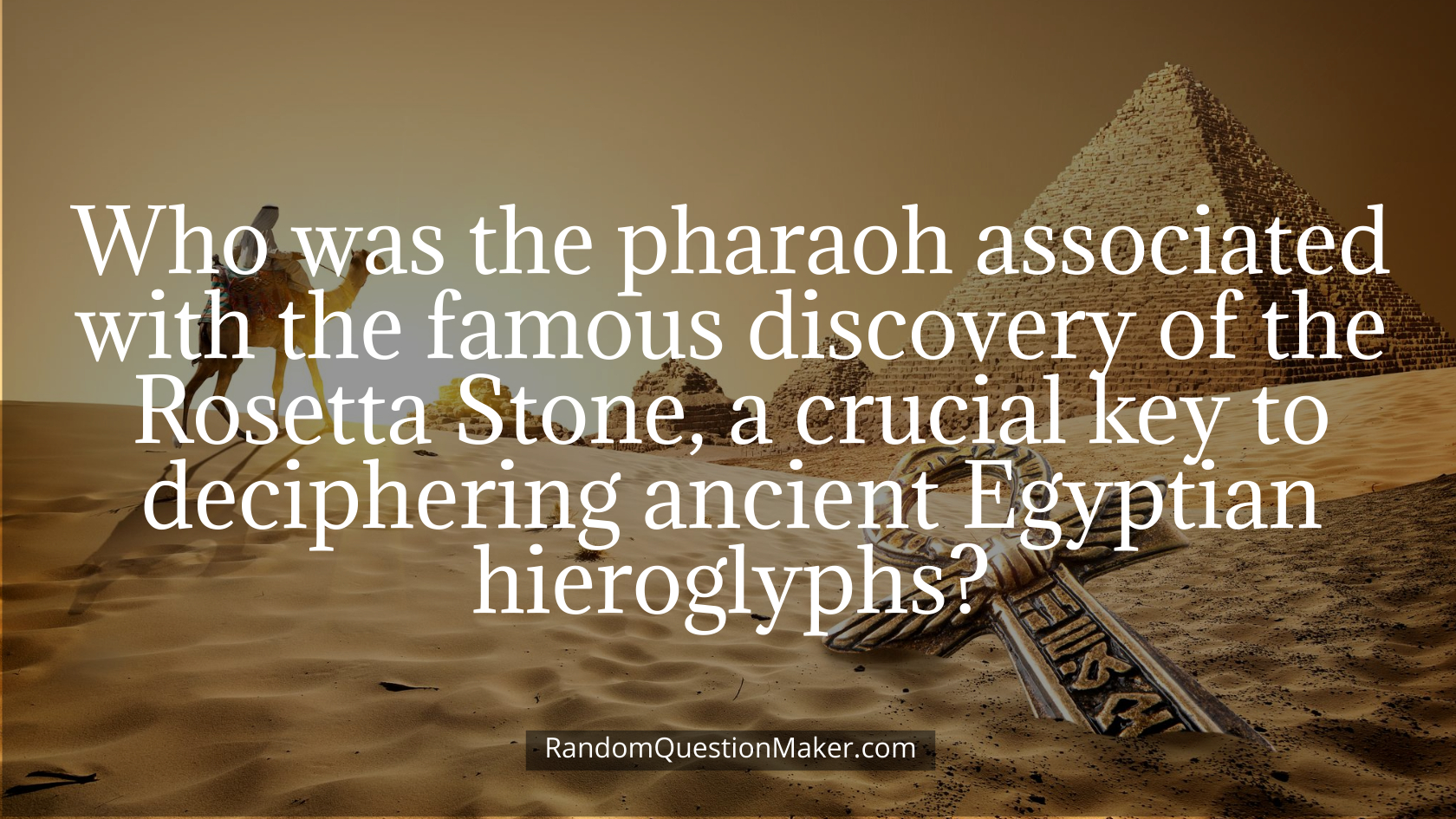
Pharaoh Ptolemy V
The Rosetta Stone, discovered during the rule of Ptolemy V, contained inscriptions in three scripts, including hieroglyphs. This artifact became instrumental in unlocking the mysteries of ancient Egyptian writing.
13. Which pharaoh undertook ambitious military campaigns, expanding the Egyptian empire into the Levant and Nubia, earning the title “The Warrior Pharaoh”?
Pharaoh Thutmose I
Thutmose I, a formidable military leader, extended Egyptian influence through strategic campaigns, solidifying Egypt’s dominance in the region during the early 18th dynasty.
14. Who was the pharaoh credited with introducing the concept of monotheism, worshiping the Aten (sun disc) as the sole deity?
Pharaoh Akhenaten
Akhenaten, known for his revolutionary religious beliefs, sought to establish Aten as the supreme god, leading to a brief period of monotheism during his reign in the 14th century BC.
15. Which female pharaoh ruled alongside her husband, Thutmose III, and is celebrated for her influential role as a co-regent?
Pharaoh Hatshepsut
Hatshepsut, often depicted in traditional male regalia, played a pivotal role as co-regent with Thutmose III, contributing to the stability and prosperity of the Egyptian empire.
16. What pharaoh’s tomb, famously discovered by Howard Carter in 1922, contained a wealth of treasures, including the iconic golden death mask?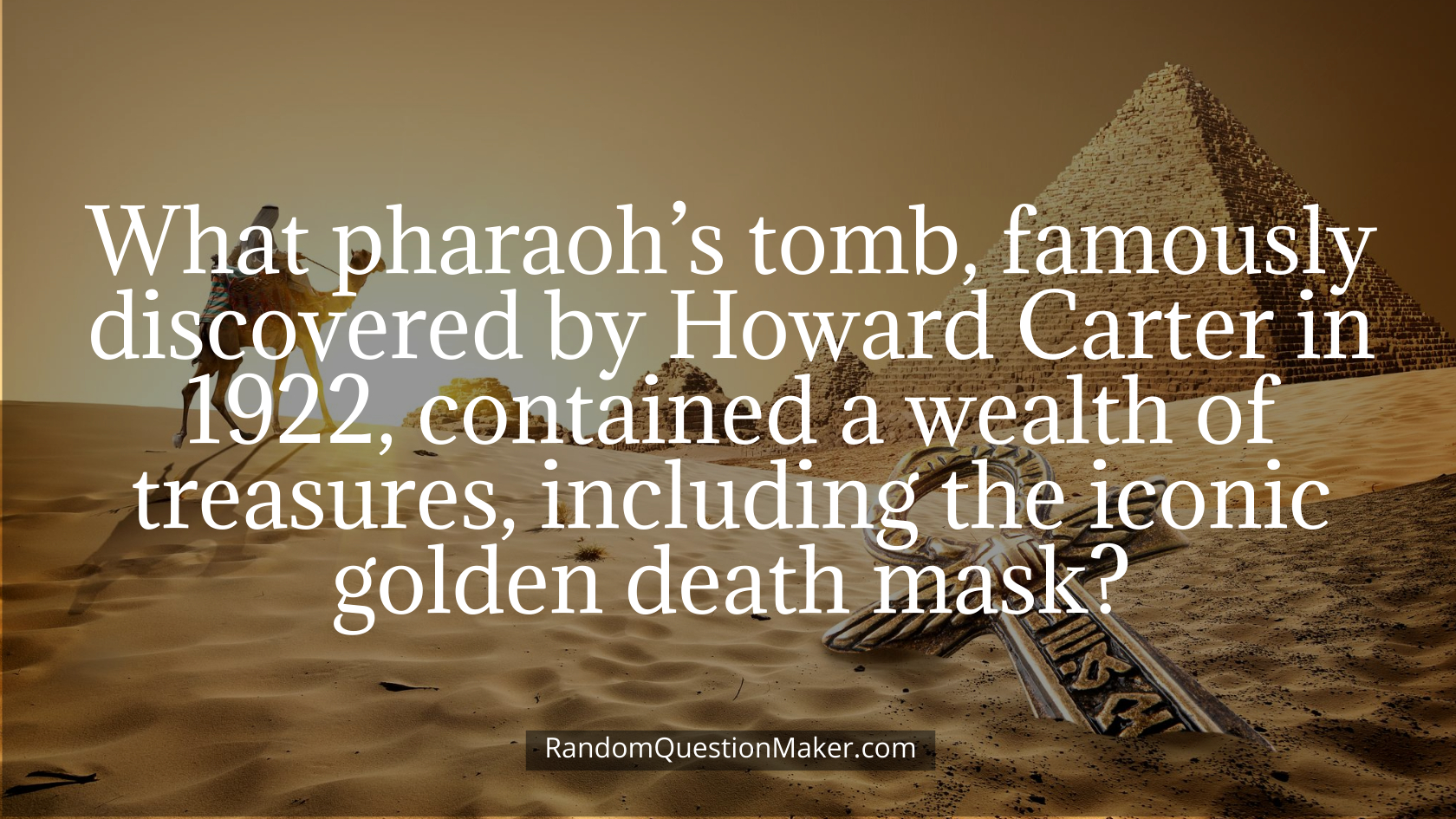
Pharaoh Tutankhamun
Tutankhamun, a young pharaoh of the 18th dynasty, became a household name after the discovery of his intact tomb, offering unparalleled insights into the opulence of ancient Egyptian royalty.
17. Which pharaoh commissioned the construction of the Sphinx, a colossal limestone statue with the body of a lion and the head of a pharaoh?
Pharaoh Khafre
Khafre, the builder of the second-largest pyramid at Giza, is associated with the Sphinx, believed to guard the pyramids and symbolize the strength and wisdom of the pharaoh.
18. What pharaoh, known for his military prowess and architectural achievements, erected the colossal statues of himself at the entrance of the Luxor Temple?
Pharaoh Ramesses II
Ramesses II, often referred to as Ramesses the Great, left an indelible mark on Egypt with monumental structures like the Luxor Temple and the Abu Simbel temples, showcasing his grandeur.
19. Which pharaoh, also known as Amenhotep IV, initiated a radical religious revolution by elevating the sun god Aten and changing his name?
Pharaoh Akhenaten
Akhenaten, in his pursuit of monotheism, shifted from the traditional Egyptian pantheon, emphasizing the worship of Aten and altering his name to reflect his new religious ideology.
20. Which pharaoh, often referred to as the “Black Pharaoh,” hailed from the Kingdom of Kush and conquered Egypt, establishing the 25th Dynasty?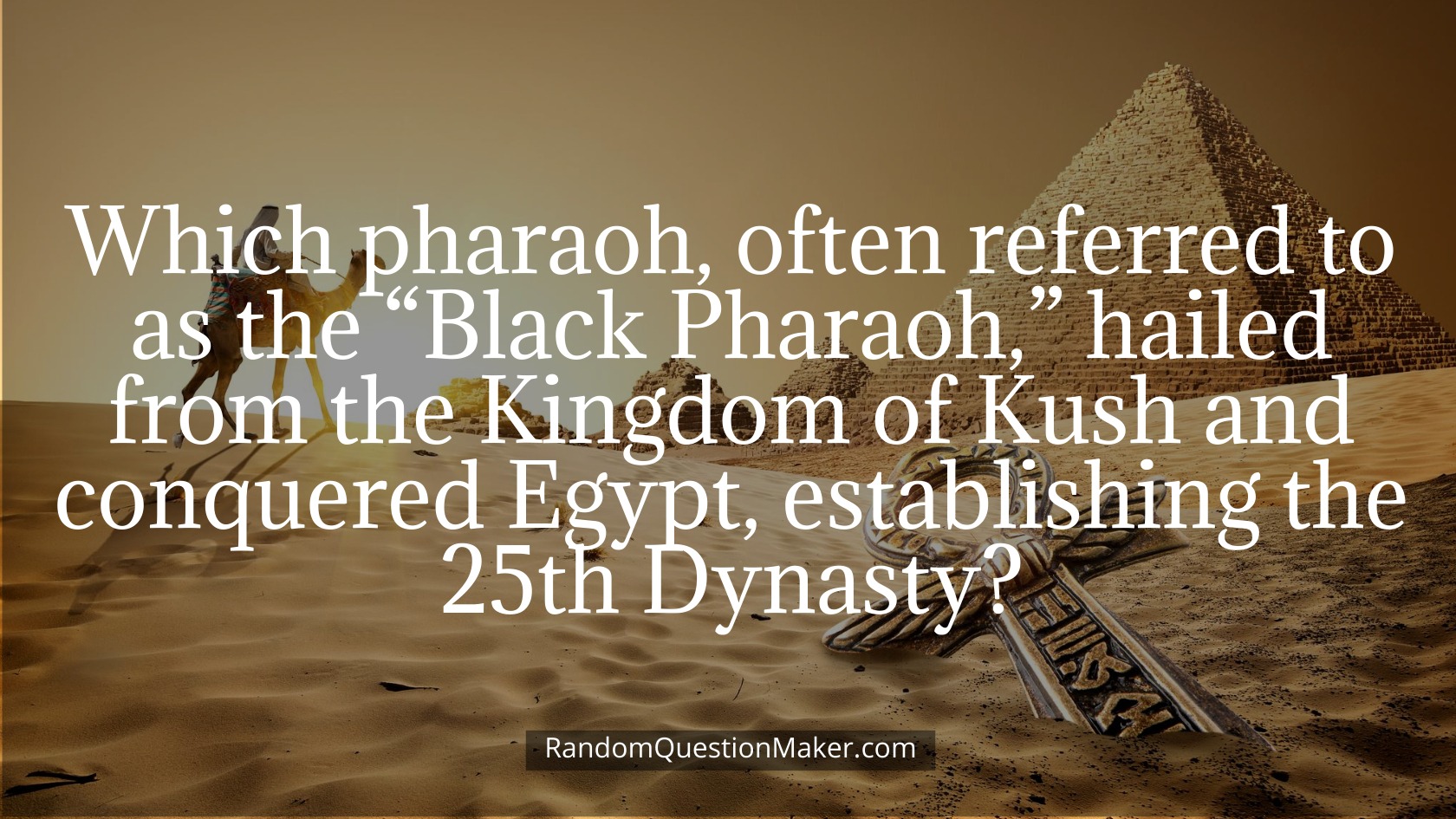
Pharaoh Piye
Piye, a powerful ruler from Nubia, achieved a significant military triumph by uniting Upper and Lower Egypt, marking the beginning of the 25th Dynasty, also known as the Kushite Dynasty.
King Tut Trivia
Explore the legacy of Pharaoh Tutankhamun, an iconic figure of ancient Egypt.
Uncover the intriguing tale of this lesser-known Pharaoh, whose anonymity played a pivotal role in the preservation of his tomb.
Delve into the global fascination sparked by the discovery of his remarkably intact burial site, igniting a renewed passion for ancient Egypt.
King Tut’s mask, a symbol of this bygone era, captures imaginations worldwide.
The myth of the pharaoh’s curse, intertwined with the deaths of those who unearthed his tomb, adds an aura of mystery.
His artifacts stand as the most exhibited among all pharaohs, testament to his profound impact.
In homage to this remarkable figure who revitalized Egyptology, we present the Pharaoh Tutankhamun Trivia.
Test your knowledge and discover the intriguing details surrounding one of ancient Egypt’s most enigmatic rulers.
Ready to embark on a journey through time? Let the quiz unveil the secrets of King Tut!
21. What is the common name given to the golden burial mask of King Tut, considered one of the most iconic artifacts in history?
The Death Mask
The Death Mask of King Tutankhamun, crafted with exquisite detail and adorned with precious stones, is a symbol of ancient Egyptian artistry and has become synonymous with the pharaoh’s legacy.
22. How many canopic jars were discovered in King Tut’s tomb, each containing a different organ?
Four
The canopic jars safeguarded King Tut’s internal organs, with each jar dedicated to preserving a specific organ—liver, lungs, stomach, and intestines—for the afterlife.
23. What was the cause of King Tut’s death, as suggested by recent scientific examinations?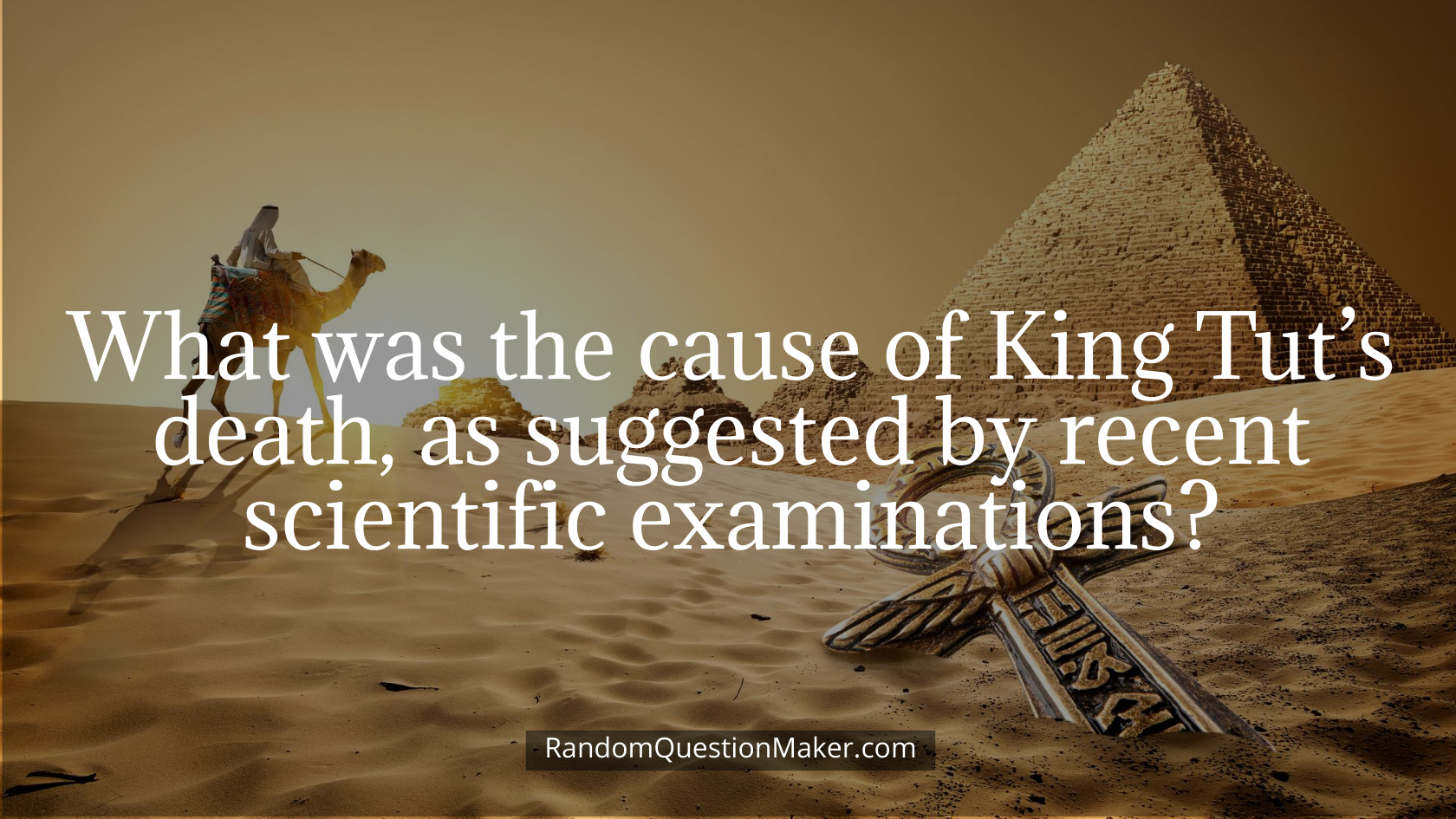
Malaria and complications from a broken leg
Recent studies on King Tut’s mummy propose that he suffered from malaria, exacerbated by complications from a broken leg. This finding challenges previous speculations about foul play or genetic disorders.
24. What unique feature of King Tut’s tomb hinted at a possible connection to the god Osiris?
Wall paintings depicting the Opening of the Mouth ceremony
The Opening of the Mouth ceremony depicted in the tomb symbolized the restoration of the deceased’s senses and connection to the divine, with King Tut’s resurrection paralleling the mythology of Osiris.
25. What precious metal was extensively used in the funerary equipment found in King Tut’s tomb, reflecting his wealth and status?
Gold
King Tut’s tomb was adorned with an abundance of gold, including his iconic mask, coffins, and various artifacts. The use of gold underscored his royal stature and the importance placed on the afterlife.
26. Which famous British archaeologist led the team that discovered King Tut’s tomb in the Valley of the Kings?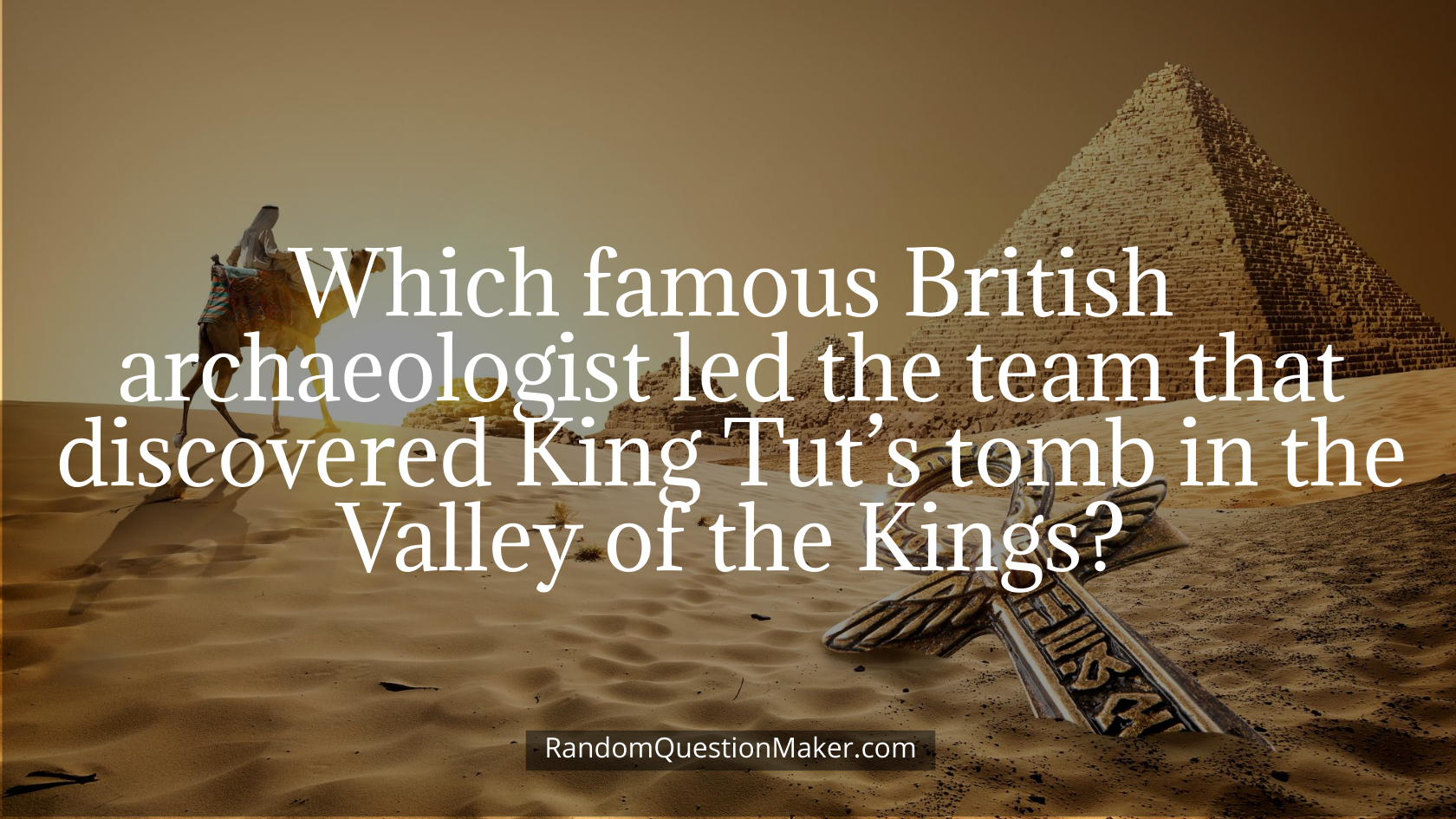
Howard Carter
Howard Carter’s meticulous excavation in 1922 uncovered the undisturbed burial chamber of King Tut, unveiling a treasure trove of artifacts that provided unprecedented insights into the life and death of the young pharaoh.
27. What is the significance of the “Curse of the Pharaohs” associated with King Tut’s tomb?
Superstition and media sensationalism
The supposed curse, linking misfortune and death to those who entered the tomb, was fueled by media sensationalism. Modern studies discredit the curse, attributing deaths to natural causes and dismissing the notion of supernatural retribution.
28. What was the purpose of the miniature boats discovered in King Tut’s tomb?
Symbolic vessels for the pharaoh’s journey in the afterlife
The intricately crafted model boats found in King Tut’s tomb symbolized the transportation of the pharaoh’s spirit through the celestial waters in the afterlife, showcasing the meticulous preparations for his eternal voyage.
29. Which famous artifact found in King Tut’s tomb is made from a material not native to Earth?
The meteorite dagger
King Tut’s tomb contained a dagger crafted from iron meteorite, highlighting the ancient Egyptians’ fascination with celestial materials and their advanced knowledge of metalworking.
30. What title did King Tut inherit upon ascending to the throne, emphasizing his role as a divine ruler?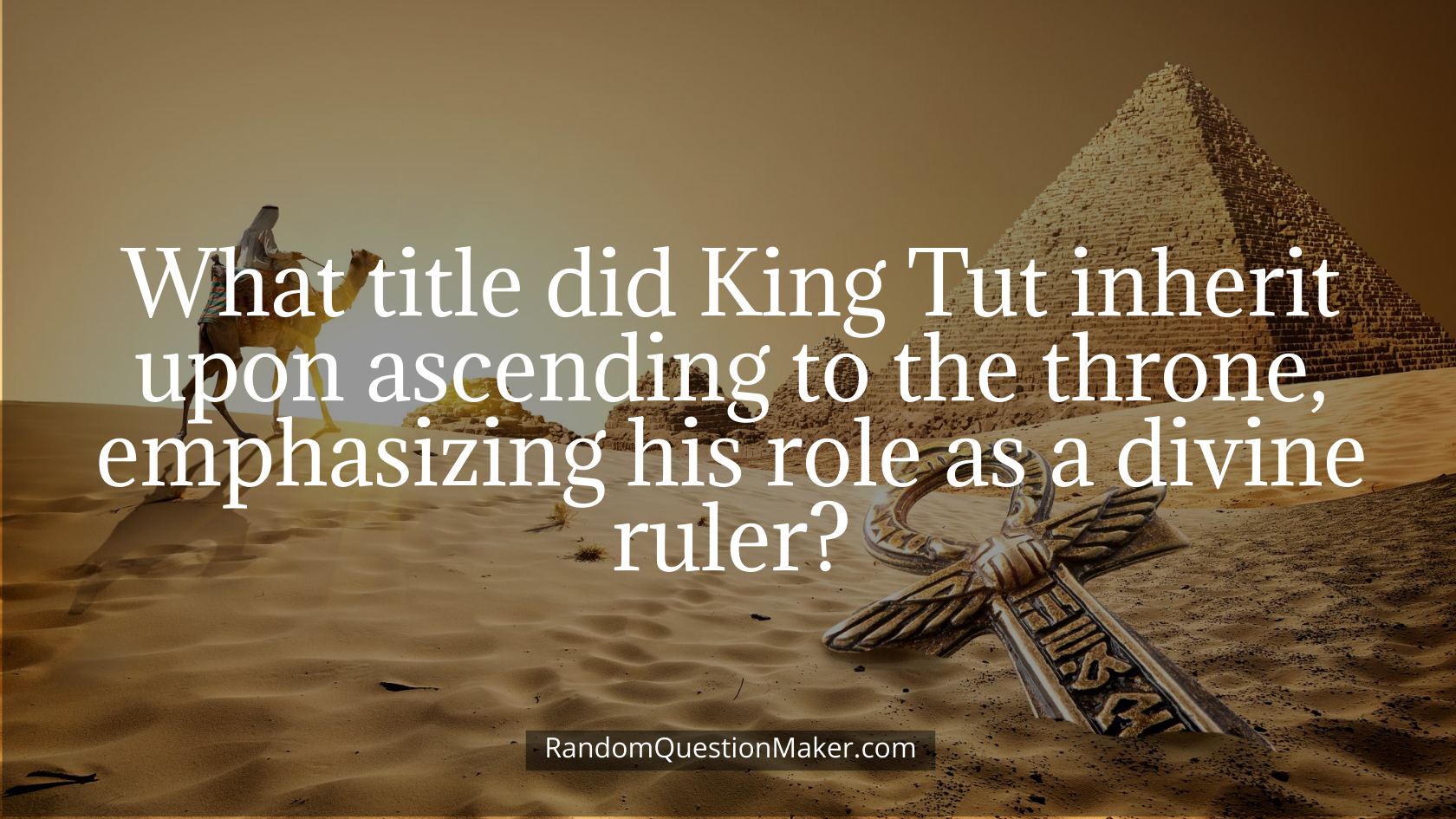
The Living Horus
As pharaoh, King Tut adopted the title of “The Living Horus,” aligning himself with the falcon-headed god Horus, a symbol of kingship and divine authority in ancient Egyptian mythology.
31. Which ancient deity was invoked in the inscriptions on King Tut’s sarcophagus, emphasizing his connection to the divine realm?
Amun
The inscriptions on King Tut’s sarcophagus invoked Amun, the powerful deity associated with kingship and the sun, underscoring the pharaoh’s divine lineage and his journey to the afterlife under divine protection.
32. What unique characteristic of King Tut’s burial mask has sparked fascination and curiosity among researchers?
The Striped Headcloth
The distinctive striped headcloth adorning King Tut’s burial mask has sparked debates among researchers about its symbolism and possible connections to the pharaoh’s lineage, adding an element of mystery to the iconic artifact.
33. Which animal, symbolizing resurrection and protection, was prominently featured on the jewelry discovered in King Tut’s tomb?
The Scarab Beetle
Scarab beetles, considered symbols of regeneration and protection, were often incorporated into jewelry found in King Tut’s tomb, reflecting the ancient Egyptian belief in the beetle’s powerful significance.
34. What role did the ancient Egyptian goddess Ma’at play in King Tut’s journey to the afterlife?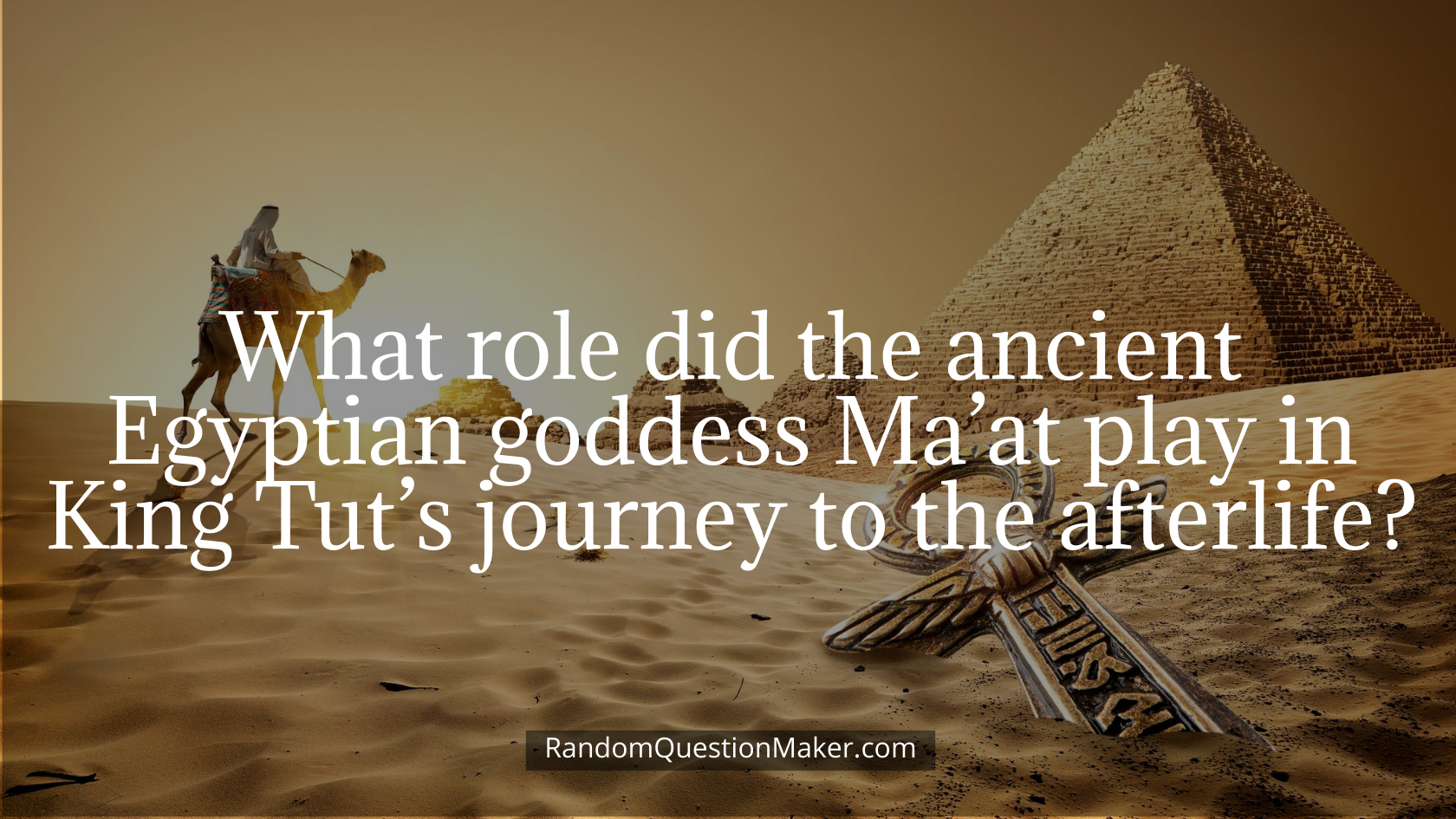
Ensuring Balance and Harmony
Ma’at, the goddess of truth, justice, and cosmic order, played a crucial role in King Tut’s afterlife journey by ensuring that his heart was balanced against the feather of Ma’at during the judgment in the Hall of Osiris.
35. What architectural feature in King Tut’s tomb mirrors the layout of ancient Egyptian temples, emphasizing the pharaoh’s divine transition?
The Corridor of Processions
The Corridor of Processions in King Tut’s tomb, resembling the avenues of sphinxes leading to temples, symbolizes the pharaoh’s journey into the afterlife, marked by ritualistic processions and divine transition.
Bonus Question
36. What ancient Egyptian city, known as the “City of the Sun,” was a center of worship for the god Ra and housed the famous Temple of Karnak?
Heliopolis
Heliopolis, an ancient city near modern Cairo, was a major religious center where the worship of Ra, the sun god, was prominent. The Temple of Karnak, dedicated to various deities, including Amun-Ra, is one of the largest temple complexes in Egypt.
39. Which ancient Egyptian queen, celebrated for her beauty and political prowess, was the principal wife of both Pharaoh Akhenaten and his successor Pharaoh Tutankhamun?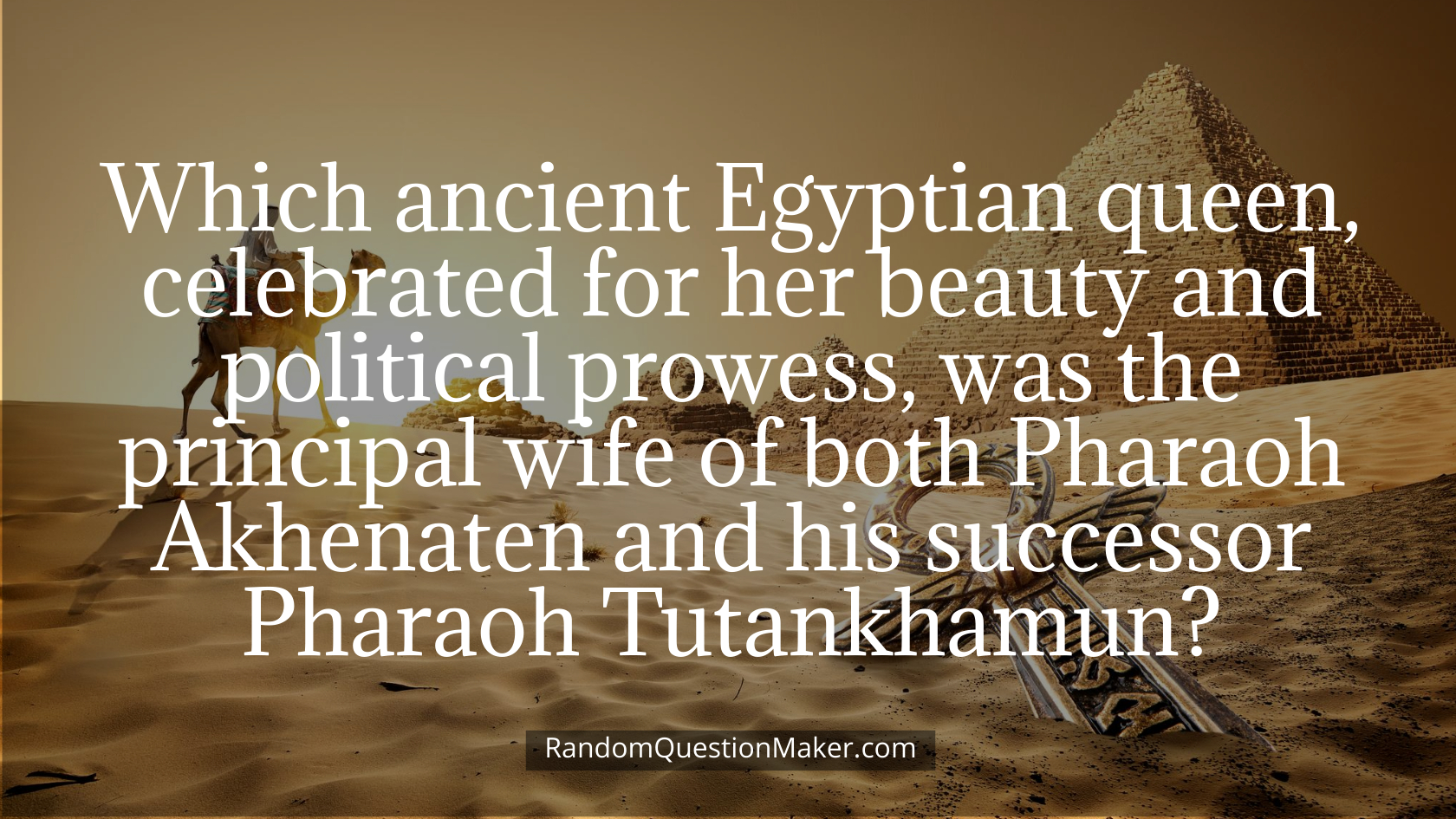
Queen Nefertiti
Nefertiti, whose name means “the beautiful one has come,” played a significant role in the religious and political changes initiated by Akhenaten. Her bust, discovered in 1912, is one of the most iconic artifacts of ancient Egypt.
40. What ancient Egyptian board game, dating back to the Predynastic period, involved strategy and luck and was often placed in tombs for the deceased to enjoy in the afterlife?
Senet
Senet, a game played on a grid of 30 squares, held cultural and religious significance in ancient Egypt. It symbolized the journey of the soul through the afterlife and was believed to bring good fortune.
41. What ancient Egyptian structure, often associated with the sun god Ra, is aligned with precision to the cardinal points and served as a symbol of divine power and renewal?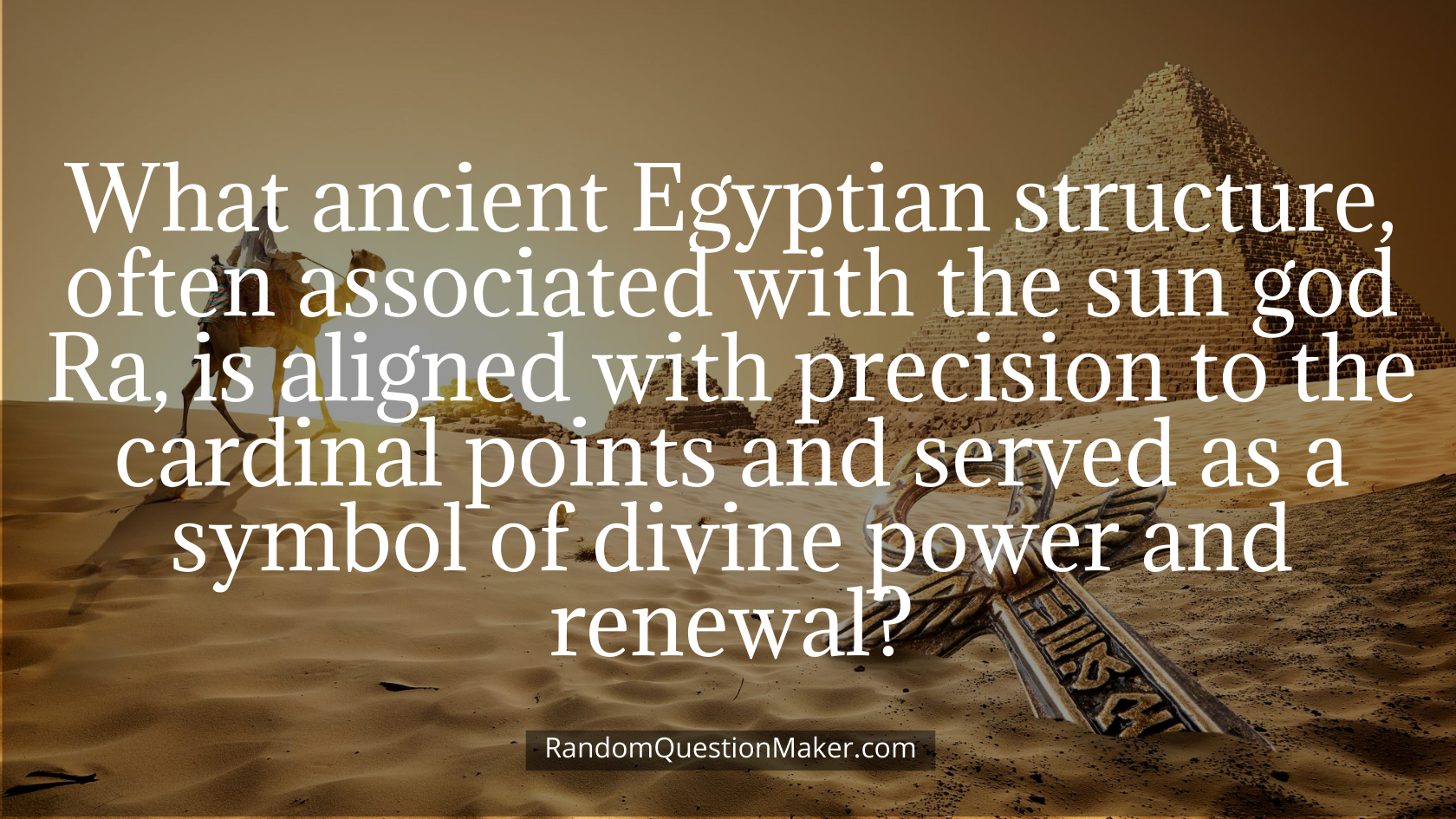
The Obelisk
Obelisks, tall and tapering stone structures, were erected in ancient Egypt as symbols of the sun god’s power. Aligned with precision, they were believed to harness divine energy and ensure the ruler’s connection to the gods.
More Trivia Questions
Checkout our main Trivia page, or you can visit the below of Trivia Questions:
- Halloween Trivia Questions
- Thanksgiving Trivia Questions
- Christmas Trivia
- Space Trivia Questions
- 80s Movie Trivia
- Shakespeare Trivia
- 90s Movie Trivia
- Disney Movie Trivia

